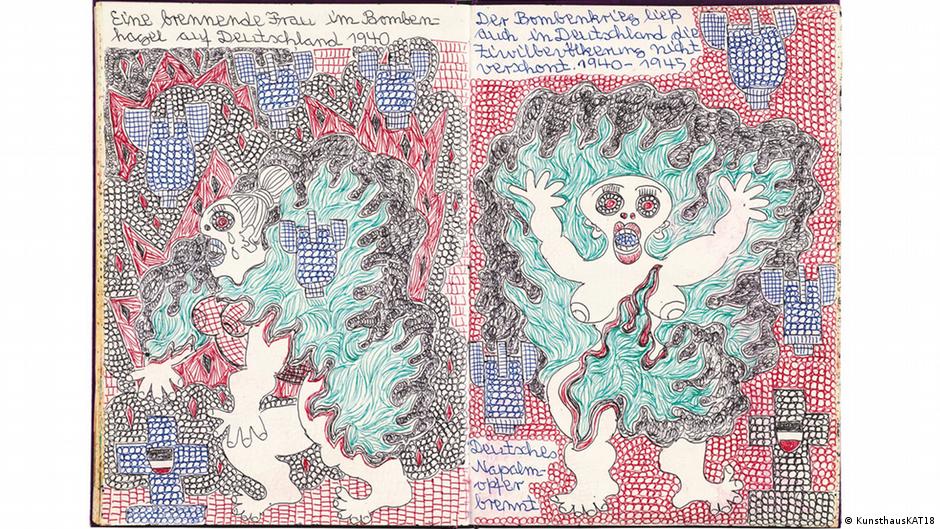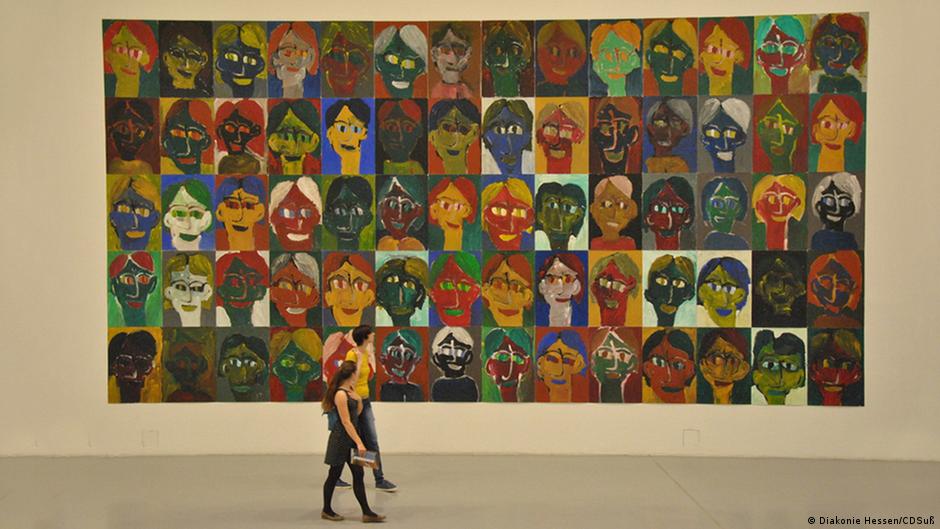Just In
- 5 min ago

- 54 min ago

- 1 hr ago

- 4 hrs ago

Don't Miss
- Movies
 Amazon miniTV Forays Into Tamil, Telugu Language Content; Brings 200+ Dubbed Shows & Films
Amazon miniTV Forays Into Tamil, Telugu Language Content; Brings 200+ Dubbed Shows & Films - Finance
 Top 5 Bank Savings Accounts With No Hidden Charges; Check Details?
Top 5 Bank Savings Accounts With No Hidden Charges; Check Details? - News
 Viral Video Manipur Election 2024 Violence: Miscreants Open Fire Near Booth, 3 Killed
Viral Video Manipur Election 2024 Violence: Miscreants Open Fire Near Booth, 3 Killed - Education
 IIIT-Bangalore Introduces PG Diploma In Digital Product Design And Management
IIIT-Bangalore Introduces PG Diploma In Digital Product Design And Management - Automobiles
 Jawa Yezdi Expands Mega Service Camps To 32 New Cities, Focusing On Tier-II And Tier-III Regions
Jawa Yezdi Expands Mega Service Camps To 32 New Cities, Focusing On Tier-II And Tier-III Regions - Travel
 San Marino: A Hidden Gem Of Ancient Architecture And Culture
San Marino: A Hidden Gem Of Ancient Architecture And Culture - Technology
 Snapchat Is Adding Watermark to AI-Generated Images for Transparency
Snapchat Is Adding Watermark to AI-Generated Images for Transparency - Sports
 Hardik Pandya bystander as Akash Madhwal takes input from Rohit Sharma before bowling final over vs Punjab
Hardik Pandya bystander as Akash Madhwal takes input from Rohit Sharma before bowling final over vs Punjab
International Day Of People With Disabilities: Differently Abled Artists Create 'Art From The Soul'

Eyes wide open, a woman runs through a hail of bombs, crying out in pain, her naked body burning. In this war scene captured on paper with ballpoint pen, Cologne artist Andreas Maus gave shape to the suffering of the German civilian population during World War II.
The works won Maus this year's euward art prize, one of the most important international awards for painting and graphic arts art for persons with intellectual disabilities. The prize is awarded every three years by the Munich-based Augustinum Foundation.
Maus' works and those of two other euward winners were on display in summer 2021 at Munich's Haus der Kunst, one of Germany's most prestigious museums. Klaus Mecherlein, a German art educator, established the art prize for painting and graphics over 20 years ago.
"We wanted more visibility for the art of people with cognitive disabilities," Mecherlein told DW, adding that goal has been achieved with the euward award.
'Art from the soul'
The art educator heads the euward archive and the Augustinum studio in Munich, where artists with cognitive disabilities work.
What distinguishes the art of people with and without impairments?
"Art experts would see the difference right away," Mecherlein says, adding that artists with intellectual disabilities don't focus so much on the impact of their work when drawing or painting.
Theirs is an art that "comes entirely from the soul, an art of great directness," Mecherlein says. Andreas Maus is a good example. Born in 1964, the Cologne artist focuses on pressing contemporary issues like exclusion, violence, persecution, war and killing.
Interest in artistic "directness" is on the rise. In Berlin, ART Cru gallery director Alexandra von Gersdorff-Bultmann shows so-called outsider art by people with mental illnesses or disabilities.
She wants to encourage their creative abilities, and considers their art to be particularly "genuine." People with impairments simply let brush, pen or canvas do the talking.
"I want these artists to never lose faith in themselves and to make use of their potential," the gallery owner said in Berlin's Tagesspiegel newspaper.

In Germany, Alexandra von Gersdorff-Bultmann is regarded as a pioneer in the field of outsider art. However, interest in the creativity of people with disabilities goes back more than 100 years. In the 1910s, the German psychiatrist and art historian Hans Prinzhorn (1886-1933) analyzed the creative works of mentally ill people, his large collection is on display at the University of Heidelberg.
Prinzhorn avoided the word "art," he spoke of pictorial works. After World War II, Jean Dubufett (1901-1985), a French artist, developed a concept of anti-intellectual art inspired by children, the naïve and the mentally ill, which he called "art brut" (raw art). The British art scholar Roger Cardinal (1940-2019) eventually coined the term outsider art.
Creating conditions for artistic work
Art brut, art cru, outsider art — the terms don't mean much to Melanie Schmitt, an art historian and therapist who runs Kunsthaus Kaethe:K near Cologne. For the past year, 11 people who need cognitive support have been living and working in the Kunsthaus studios.
"We want to raise the creative potential of these people and create the conditions for their artistic work," said Schmitt.

Firat Tagal's Kunsthaus studio is piled high with large-format acrylic paintings of architecture and pop culture. Elias von Martial, who like Tagal is in his mid-20s, specializes in drawings that revolve around myths, combat and fantasy.
"When I draw there could be an earthquake outside, and I might not notice," he said. The young man would like to study at the Düsseldorf Art Academy, a goal Schmitt believes he can achieve.
Andreas Pilz knows of many such artists who are serious about their art.
"Promoting these people is a never-ending task," Pilz told DW. The art expert was in charge of an exhibition of works by people with and without disabilities, which toured Germany for three years and ended in 2017.
"It's about the art, not the disability," he said.
This article has been translated from German.
Source: DW
-
 art cultureGerman Visual Artist Gerhard Richter Turns 90: A Look At His Journey In Art
art cultureGerman Visual Artist Gerhard Richter Turns 90: A Look At His Journey In Art -
 art cultureRenaissance Italian Painter Sandro Botticelli's Work Sells For $45 Million At Sotheby's Auction In New York
art cultureRenaissance Italian Painter Sandro Botticelli's Work Sells For $45 Million At Sotheby's Auction In New York -
 art cultureGreek Artist Alekos Fassianos Passes Away: Tribute
art cultureGreek Artist Alekos Fassianos Passes Away: Tribute -
 art cultureHollywood Stars Who Paint: The Art Of 'Rocky' Sylvester Stallone
art cultureHollywood Stars Who Paint: The Art Of 'Rocky' Sylvester Stallone -
 art cultureUnderground Pop Art In Erstwhile East Germany Before The Fall Of The Berlin Wall
art cultureUnderground Pop Art In Erstwhile East Germany Before The Fall Of The Berlin Wall -
 pulseCrazy Painters Who Use Unique Painting Tools
pulseCrazy Painters Who Use Unique Painting Tools -
 decorCreative Ways To Glam Up A White Wall
decorCreative Ways To Glam Up A White Wall -
 improvementCool Ideas To Cover Patches On Walls
improvementCool Ideas To Cover Patches On Walls -
 healthZero Project India Conference And CII-IBDN National Conference Hope To Inspire Change In Disability Space
healthZero Project India Conference And CII-IBDN National Conference Hope To Inspire Change In Disability Space -
 disorders cureWhat Is Deafblindness? History, Types And Its Causes
disorders cureWhat Is Deafblindness? History, Types And Its Causes -
 wellnessCoronavirus And People With Disabilities: What You Need To Know
wellnessCoronavirus And People With Disabilities: What You Need To Know -
 wellnessCan Consuming Fruits, Vegetables Reduce Multiple Sclerosis Symptoms?
wellnessCan Consuming Fruits, Vegetables Reduce Multiple Sclerosis Symptoms?


 Click it and Unblock the Notifications
Click it and Unblock the Notifications



